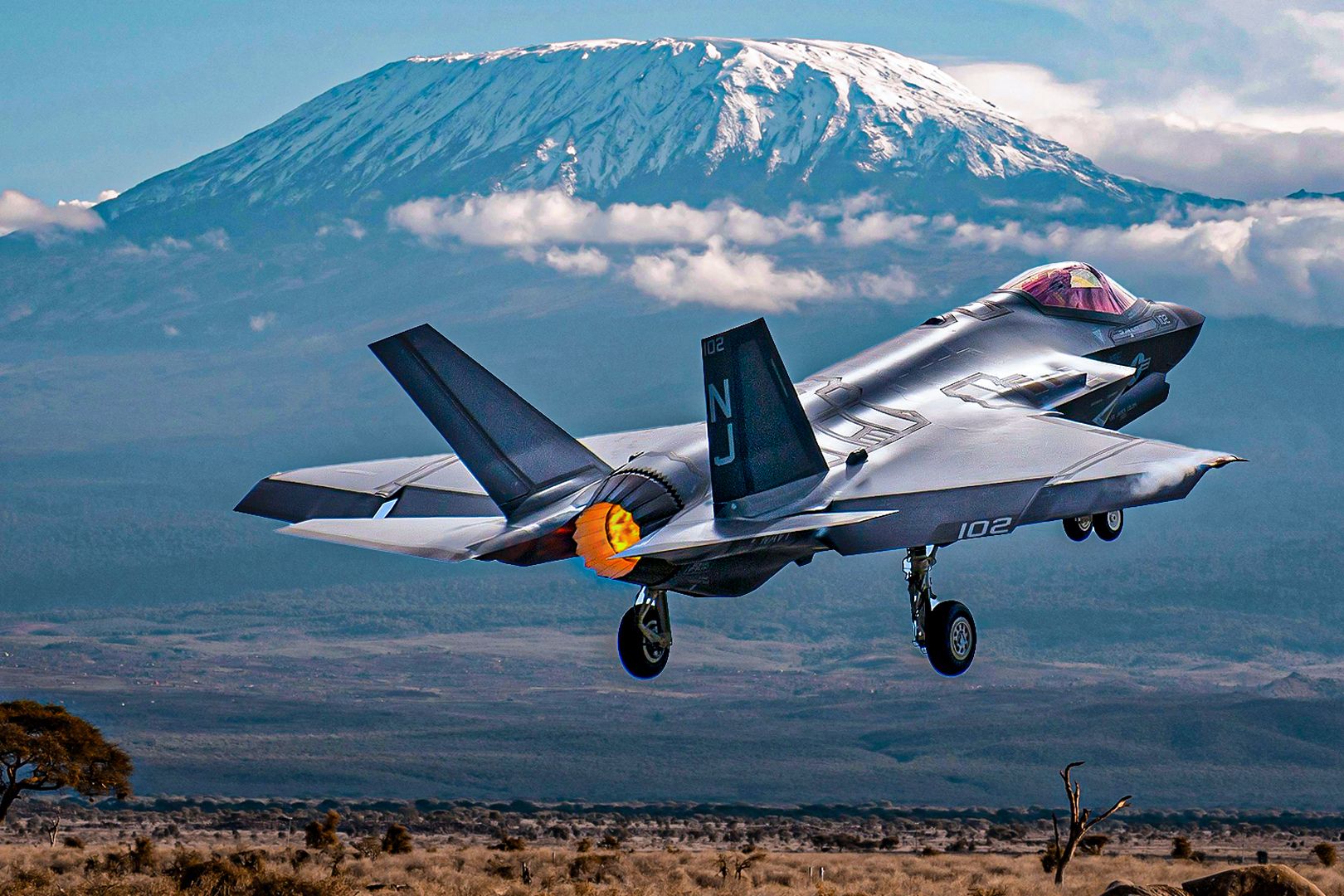Summary The UK is the primary Level 1 partner for the F-35 program, with British components in many parts of the jet. European countries like Netherlands and Italy also contribute to F-35 manufacturing, along with Japan. F-35 jets have components from around the world, including Canadian inserts, Australian tail sections, and Turkish parts (replaced).
The F-35 Joint Strike Fighter is an American fighter jet , but being an American fighter jet doesn't mean it is fully American. Take a closer peak at the F-35, and one can find the fingerprints of many US allies in it. For example, the British supply many components (especially for the F-35B variant).

Even Turkey supplied components for the jet before the US kicked Turkey out of the program. Not all jets are assembled in the US; Japan is assembling their F-35As in Japan , while many Europeans assemble theirs in Europe with final check out in Italy . United Kingdom: The F-35's sole Level 1 partner Great Britain is the F-35's only Level 1 partner.
British industry significantly contributes to the production of every F-35 fighter jet. While Lockheed Martin is the prime contractor for the F-35, BAE is a significant subcontractor. BAE states it holds a 13-15% workshare of each aircraft (excluding propulsion).
Examples of British F-35 parts: Contractor: LiftSystem (only F-35B): Rolls-Royce Software code: BAE Ejection seat: Martin Baker Rear fuselage (all F-35s): BAE BAE contributes with software code, including for cockpit display, fuel management, on-board vehicle systems, and more. BAE has worked on the F-35 program since its inception. Leading British contractors with the F-35: BAE Systems Martin-Baker SELEX Cobham Ultra Electronics UTC Actuation Systems Rolls-Royce “The fingerprints of British ingenuity can be found on dozens of the aircraft key components.
BAE Systems, GE Aviation, Martin-Baker, SELEX, Cobham, Ultra Electronics, UTC Actuation Systems and Rolls-Royce are just a few of the more than 100 U.K.-based suppliers for the program.
” - Lockheed Martin The F-35 is built in three variants : the F-35A Conventional Take Off and Landing (CTOL), the F-35C Carrier Variant (CV), and the F-35B Short Take Off and Vertical Landing (STOVL). These variants are so different that they can almost be considered separate aircraft. Sometimes, it seems difficult to find a Western jet that doesn't have Rolls-Royce fingerprints on it.
The F-35 may be powered by the Pratt & Whitney F135, but the UK's Rolls-Royce is the world's only company producing STOVL technology. Consequently, Rolls-Royce builds the LiftSystem for the F-35B. If you peek inside the cockpit of many Western fighter jets, you will find a British Martin Baker ejection seat.
All F-35s are fitted with British Martin Baker US16E ejection seats. Martin Baker reports it has delivered 1,200 ejection seats for the F-35 to date ( Lockheed Martin recently delivered its 1,000th F-35 ). Many countries around the world are purchasing the F-35A and F-35B variants of the advanced F-35 fighter jet.
European components in the F-35 Many other countries contribute to the F-35. The fighter jets are built with participation from Australia, the Netherlands, Canada, Italy, Denmark, and Norway. Japan builds many of the components for its own aircraft, while Leonardo built some wings in Italy.
The British/Italian contractor Selex ES recently received a contract for 165 advanced targeting lasers for the F-35 Lightning II's Electro-Optical Targeting System. "Led by the US, with participation from the UK, Italy, Netherlands, Australia, Canada, Denmark, and Norway, the F-35 Lightning II programme is truly collaborative, aimed at delivering a stealthy, multi-role attack aircraft capable of operating from land and sea to nations across the globe." - BAE The Netherlands' participation in the F-35 program came to the fore as the country banned the export of parts for the F-35 to Israel due to concerns over the war in Gaza.
Israel is a key operator of the F-35 and has recently ordered 25 more F-35As , for a total of 75. The US also granted Israel unique permission to make some modifications to certain parts of the aircraft. Key F-35 purchasers: Number planned: Variant: United States Air Force: 1,763 F-35A United States Navy: 273 F-35C United States Marine Corps: 420 F-35B/C Royal Navy/Royal Air Force: 138 F-35B Japanese Self-Defense Force: 147 F-35A/B Israeli Air Force: 75 F-35A Italian Air Force/Navy: 90 F-35A/B Royal Australian Air Force: 100 F-35A According to Gordian Logistics Experts , the Netherlands produces many parts for European F-35s, and " The US Department of Defense selected the Netherlands in 2019 to store, ship and manage spare parts for over five hundred F-35s .
" While Germany has opted for its F-35As to be built in the United States instead of locally, Germany also plays a major role. In 2023. DW reported that German arms manufacturer Rheinmetall started the construction of a new factory that is expected to produce fuselage sections for around 400 F-35s.
Switzerland is set to be one of a select group of countries that will be able to assemble F-35 jets outside of the United States. Other countries providing F-35 parts F-35s contain around $2.3 million worth of Canadian components, including inserts for the weapons bay doors and machined wing tie bars for the aircraft's leading edge flap.
Australia participates in making the vertical tail sections of the F-35A variant. Turkey used to supply parts, but its parts have since been replaced after being expelled from the program (Turkey is now one of several countries the US has barred from buying the jet ). According to The Diplomat , the F-35 even has Chinese parts.
This is a cause of concern for the US, but it is difficult to fully eliminate. The F-35 has many more components from many countries, but it remains an American fighter jet..



















